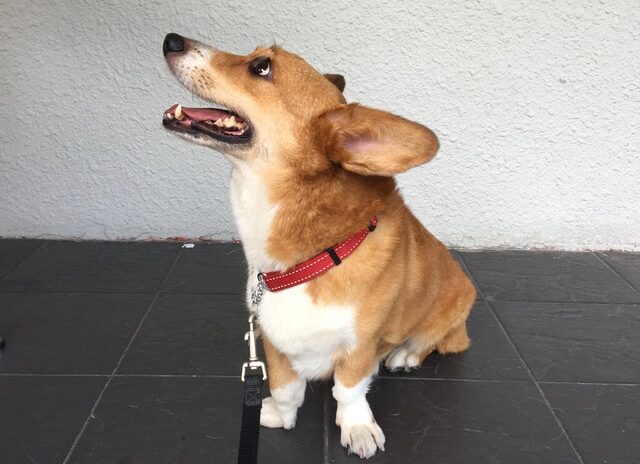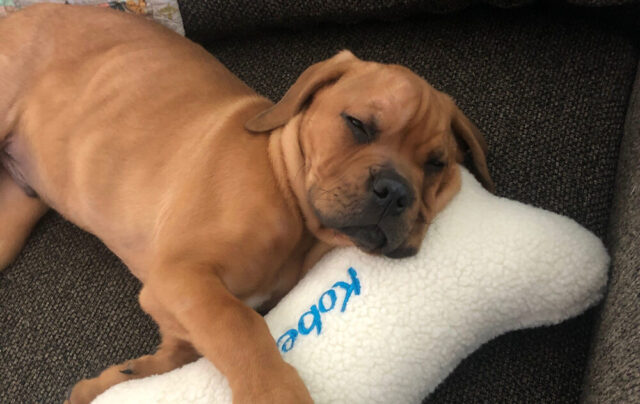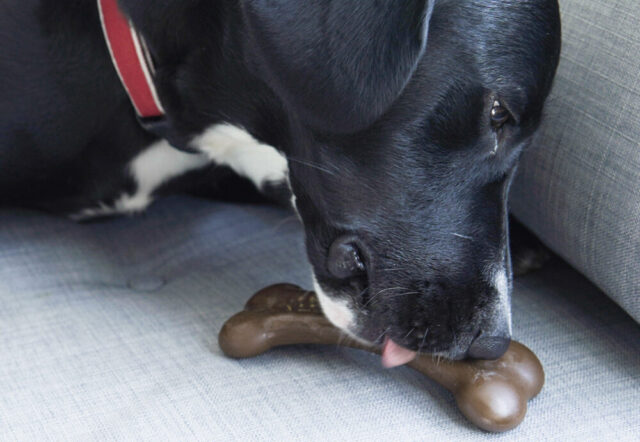It may feel like there is no end in sight, but eventually, lock-downs will be lifted, and folks will return to work. While this will be a time of celebration for most humans, how will dogs handle separation anxiety after COVID-19?
According to animal psychologist Dr. Roger Mugford, dog parents should start preparing their pets to cope in a post-Coronavirus world.
“With such an overload of quality time with their families, dogs are building up a huge reservoir of over-dependency which could see them suffer when mums and dads suddenly return to work and the children go back to school,” Dr. Mugford told The Times.
Best known for training Queen Elizabeth’s Corgis, Mugford recommends owners begin introducing short periods of isolation now. This is especially important for young dogs and those adopted over the last few months.

Helping Your Dog Cope With Separation Anxiety After COVID-19
Dogs are social animals so teaching them to self-isolate can be difficult. While no dog should be left alone for longer than four to six hours (two hours for young puppies and older seniors), you can gradually help them acclimate to spending short periods alone.
The trick is to teach them that being alone is not a punishment and can actually be fun. If you can get them to enjoy their alone time, they will be less likely to experience separation anxiety after the COVID-19 crisis ends.

Prepare A Comfortable, Safe Area
The first step is to choose an area of your home where your dog will be both safe and comfortable while you are away. Many people choose to use a crate. If this is your preference, be sure to buy one that is large enough for your dog to stand up to their full height and do a full turn.
Other options include laundry rooms, bathrooms, and utility rooms. You can also use baby gates to block off a kitchen or sun-room. Many trainers prefer baby gates because they allow the dog to see, hear, and smell you during the early training phases.
Once you have chosen an area, personalize it with your dog’s bed, water bowl, safe toys, and chewing options, etc. Some people opt to play soft music while they are away. Providing a piece of clothing carrying your scent can also help stave off separation anxiety.

Train Your Dog To Tolerate Alone Time
Take advantage of your time at home to begin placing your dog in their isolation area throughout the day. These sessions should only last a few minutes, especially if you have a puppy or a dog learning to be alone for the first time. Provide a highly desirable chewy or treat toy. This teaches them that isolation can be rewarding.
Make sure your dog only has access to this special item when in their isolation area!
After a few minutes, open the door or gate. Hopefully, your dog will choose to stay put and enjoy their treat, but they may also decide to leave.
Repeat this process over a period of several days, gradually increasing the amount of time your dog spends alone. When they can remain comfortably engrossed in their special treat with you out of sight for 30 minutes, you can begin leaving the house altogether.
As before, you want to slowly increase the time away from home. Try puttering in the garden for a few minutes, then work up to short trips to the store, etc. Some dogs need more time to adjust than others, so be patient.

How Has COVID-19 Affected Separation Anxiety In Dogs?
Even if your dog has spent time home alone in the past, the recent pandemic has changed the game. Not only has your pup gotten used to the new normal, but they have also been exposed to your anxiety. You may have lost a friend or loved one to COVID-19. Or maybe homeschooling and working from home have you feeling the stress.
Studies show that dogs can easily sense our tension, and often take it onto their own shoulders. Our pups share in our joy, pain, excitement, and stress.

What Can You Do To Help?
If you find that your dog is experiencing more stress than usual, consider going back to the basics. James Summey, owner of JTS Dog Training in Sacramento, CA recommends brushing up on basic obedience training to remind your dog you are in control and help them feel safe.
Maintaining a normal schedule is also important. If your dog typically goes for a morning and evening walk, keep up that routine. It will help minimize the sense of chaos from the current situation.
You can also find helpful information and tips in our Definitive Guide To Dog Care During The COVID-19 Crisis.

Despite our best efforts, many dogs are going to suffer from separation anxiety after COVID-19 runs its course and life returns to normal. If your dog has an existing problem with isolation, you may want to bring in a professional trainer to help the transition go more smoothly.
Your dog has been there to help you through your self-isolation anxiety, now is your chance to return the favor!
Additional Resources On Separation Anxiety:
5 Signs Your Dog Has Separation Anxiety
12 Dog Breeds Prone To Separation Anxiety
Your Dog & Separation Anxiety: What You Can Do To Help
 Toledo, United States.
Toledo, United States.